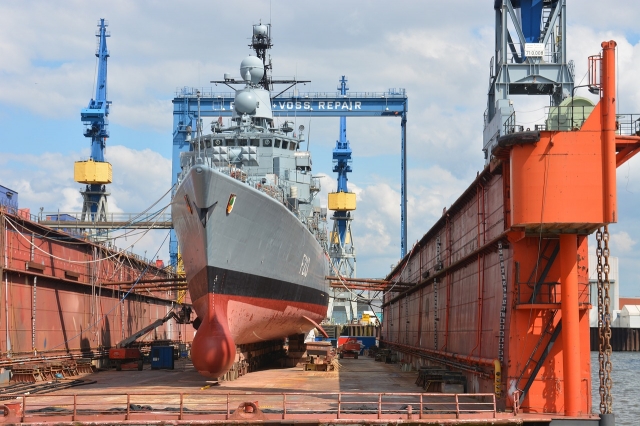Shipbuilding is a complex and demanding industry requiring various welding techniques to ensure the structural integrity and durability of vessels. Welding in shipbuilding is not only about joining metals but also about ensuring the safety, performance, and longevity of ships.
Here are the primary types of welding used in this industry.
Gas Metal Arc Welding (GMAW)
A continuous wire electrode and a shielding gas are used in GMAW, also known as MIG (Metal Inert Gas) welding. Due to the use of wire, these machines are called wire welders.
Among the many brands is a Miller wire welder, which offers benefits like high efficiency, clean welds, and ease of use. The wire electrode is melted to join metals or other materials together.
One of the main advantages of a Miller wire welder is its ability to work with different types of metals and thicknesses. It is easily able to work with materials like aluminum, stainless steel, and steel. This flexibility is enhanced by the wide range of wire diameters and types available. This enables consumers to choose the best choice for their unique requirements.
Consider Millermatic 252, for example. According to Welding Supplies from IOC, it can weld materials with 22 gauge to ½ inch thickness in a single pass. Moreover, it comes equipped with infinite voltage control and several features, such as:
- Auto gun detects
- EZ-change low cylinder rack
- EZ-access consumable compartment and parameter chart
Shielded Metal Arc Welding (SMAW)
Another common name for SMAW is stick welding. A disposable electrode coated with flux is utilized in this commonly used welding method to lay the weld. Due to this method's resilience, simplicity, and applicability, it has become a cornerstone in many businesses.
With SMAW, an electric current passes through the electrode to create an arc between it and the metals to be joined. This arc's heat melts the base metal and the electrode, generating a pool of weld that solidifies to form a sturdy bond.
A shielding gas is created when the electrode's flux coating breaks down. This protects the weld from atmospheric contamination and helps in the formation of slag, which covers the weld bead. Thus, an NCBI article states that it does not require any additional shielding gas, which is used in the GMAW welding type. Moreover, it also has faster deposition rates than gas tungsten arc welding.
In the shipbuilding industry, SMAW plays an important role due to its effectiveness in joining thick materials, which are common in ship construction. This welding process is highly adaptable and can be performed in various positions and environments, including outdoors and underwater. This makes it ideal for the diverse and demanding conditions often encountered in shipyards.
Flux-Cored Arc Welding (FCAW)
With this type of welding, a flux-filled, consumable tubular electrode is supplied constantly. During the welding process, the flux offers a defense against contamination and oxidation.
Shipbuilders prefer FCAW for several reasons, primarily because it allows for high deposition rates, which significantly speeds up the welding process. This efficiency is significant in shipbuilding, where large metal sections need to be joined quickly and reliably.
In shipyards, FCAW is commonly employed to construct and repair various parts of a ship, including the hull, deck, and bulkheads. Its ability to produce strong and durable welds makes it ideal for these critical components that must withstand harsh marine environments.
Gas Tungsten Arc Welding (GTAW)
As the name implies, GTAW welding employs a non-consumable tungsten electrode. Shipbuilders usually prefer this type for ship interiors and processes, where they require meticulous craftsmanship and strong, durable joints.
This is due to the fact that shop fabrication is a better fit for GTAW than field fabrication. According to a ScienceDirect study, the air movement when using GTAW must be less than five mph to maintain the inert gas blanket layer. Therefore, it is chosen for welding thin materials, complex structures, and components where the appearance of the weld is critical.
One of the primary reasons shipbuilders prefer GTAW is its control over the welding process, allowing for minimal heat input. GTAW's ability to weld without filler material or with various filler materials when necessary provides flexibility in joining different types of metals and alloys. Additionally, GTAW produces welds with superior mechanical properties and corrosion resistance, which are critical in the harsh marine environment where ships operate.
Electron Beam Welding (EBW)
EBW is especially preferred in the shipbuilding sector for combining heavy metal parts with excellent integrity. This welding method creates deep, thin welds by melting and fusing materials using a concentrated stream of high-velocity electrons.
EBW can also be used in a vacuum that might be created in shipbuilding to control the environment. In the vacuum, EBW uses the kinetic energy of electrons moving with high velocity for the welding. When the electrons hit the metal surface, they release most of their energy as heat. This melts the metal and makes it weld.
Frequently Asked Questions
How big is the welding equipment industry?
According to Coherent Market Insights, the global welding equipment market was worth $16.82 billion in 2022. It is expected to grow at a CAGR of 10.54% until 2030, with North America leading the market.
What kind of welding rod is used on ships?
Stick (SMAW) and wire (GMAW) electrodes are two common consumable kinds. Due to its versatility and capacity to weld in various places, stick electrodes are frequently employed in shipbuilding. When utilized in MIG welding, wire electrodes are very productive and work well with thin materials. In GTAW welding, tungsten is a typical non-consumable electrode.
What is flux core welding used for?
When it comes to welding polluted, corroded, or unclean metals, flux core welding works great. Due to the flux shield, this welding method is perfect for outdoor welding operations and all welding situations. Gaining proficiency in flux-cored arc welding is a very simple procedure.
The shipbuilding industry relies on a variety of welding techniques to construct and maintain vessels. Each welding method offers distinct advantages and is suited to specific applications, from the robust and versatile SMAW to the high-precision EBW. Understanding these welding types and their applications ensures the construction of safe, reliable, and durable ships, meeting the rigorous demands of maritime operations.






